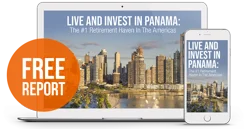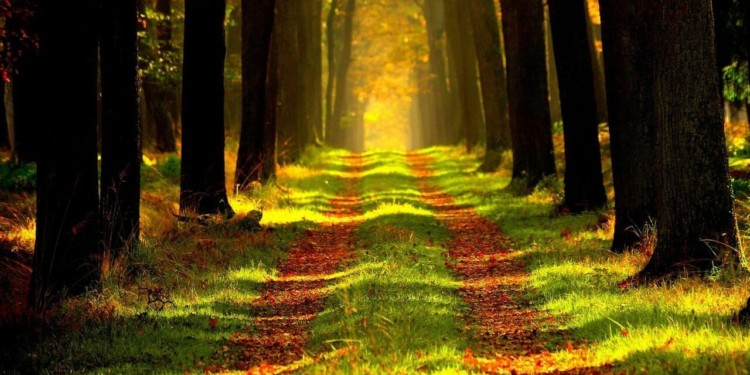Eighteenth- and 19th-century apartments in central Paris… and land.
If you’re deliberating over what to do with your investment capital right now (as is our friend Frank Laarman, who explained his current thinking over dinner one evening last week), these are the two plays to focus on:
Centuries-old bijou real estate in a brand-name city like Paris… and productive agricultural land on which to grow corn, soybeans, wheat, alfalfa, fruit trees, grape vines… or timber.
This last—timber farming—is on my mind lately, as, as you may know, an investment in timber is one of the ways you can organize full-time residency in Panama. In fact, after considering the eight different options for obtaining legal residency in this country, reforestation is the one we chose… for lots of reasons.
First, the capital requirement is modest—as little as US$40,000 per applicant. You can spend twice as much if you want to reduce your renewal obligation. With the US$40,000 investment, you’ve got to be in the country during certain periods every year for five years to renew your visa. Not a big deal for us right now.
With the US$80,000 investment, on the other hand, only one renewal is required before you’re issued a permanent resident’s visa.
Second, the process is straightforward, at least if you engage professional help. And I’d suggest that you’d have to be nuts not to go pro on this.
The reforestation investment and the visa application are separate things. That is, you make the reforestation investment through one of the organizations in this business (more on this in a minute)… then you engage an attorney to manage the visa application process for you.
In Panama last month, I spent a remarkably painless morning at the Department of Immigration, the final step in the application process for my visa. I sat comfortably in a chair, out of the way of the crowds and removed from the general chaos, while my runner, a nice young Panamanian girl in the employ of my Panama attorney, went from window to window, explaining, cajoling, reviewing paperwork, obtaining signatures and stamps, making payments, and, all the while, smiling prettily. At every window, she was able to move quickly to the front of the line and received almost immediate attention. No one seemed to mind, and everyone seemed to know her.
On the other hand, the poor souls who’d opted to brave the experience on their own stood in line after line and shuffled back and forth among the clerks, looking more tired, more confused, and more demoralized after each encounter with another representative of Panama City’s immigration and naturalization services.
It’s well worth the US$1,500 you pay an attorney to handle the process for you.
The third reason we’ve opted for Panama’s reforestation residency option is because it leads to citizenship. After five years holding a forestry visa, you can apply for a Panamanian passport.
Finally (and this is perhaps the most relevant point right now), we chose the reforestation option from among all the choices for becoming legal Panama residents because we like trees, both generally and financially. We appreciate hard assets, investments you can see and touch, even go to visit… from apartments in central Paris to teak plantations in the jungles of Panama.
I enjoyed an up-close-and-personal introduction to the reforestation visa option a half-dozen years ago when Lief and I visited the plantation of our friend Robert Kroesen. It was like a day at a Disney theme park: Teak Forest Adventureland. We donned knee-high boots and hooded slickers, climbed into open-topped quads, and took off in the rain to off-road it up and down some of the hills and valleys of Robert’s 3,000 hectares of trees.
By the end of the afternoon, we were covered with mud and grinning like fools. Robert led us to his plantation house for steaks before the plane ride back to Panama City.
In the years since, we’ve done some research:
Managed timber has beaten the stock market over the past 30 years, returning about 15% a year, while stocks, during the same period, have returned only, on average, about 11% annually.
Furthermore, not only is timber a good way to beat the markets, it’s also a great way to hedge them. Timber operates blissfully ignorant of things like NASDAQ, housing bubbles, and Wars on Terror.
And the demand for this commodity continues to grow, while the supply, especially for certain kinds of timber, like teak, the world’s most valuable hardwood, is limited.
Teak is indigenous to only four countries in the world (Burma, Thailand, Laos, and India) and has a very narrow growing zone. Areas suitable for vigorous growth are confined to a band around the equator.
For centuries, the kings of Burma and Thailand considered teak a royal tree. Today, Burma, home to the last remaining natural teak forests, all of which are the property of the government, is the largest global exporter of premium teak, producing about 80% of world supply.
The remaining natural forests are being logged at a rapid rate. Some predictions are that Burmese forests could be logged completely in the next few years, meaning the growing world demand would have to be fulfilled by teak plantation production. And, right now, there aren’t a lot of teak plantations worldwide.
Meantime, our friend Robert’s 14-year-old plantation in Panama’s Darien region is thriving.
If we hadn’t decided to move to Panama and therefore weren’t shopping residency options, we probably still would have bought some of Robert’s teak trees.
Our residency requirement was the impetus to act sooner rather than later, and, with our residency investment package, we’ve invested in about a hectare of land planted with saplings and titled in our name.
This last point is important. With some groups, your reforestation investment gains you a Panama resident’s visa… but not a piece of titled land. You may be paid out from the production of the plantation, but you don’t own a piece of it outright. With Robert’s United Nature program, you do.
Projected return from our US$40,000 hectare-plus of trees, based on today’s price of the commodity, is US$240,000. Of course, this is a long-term play. Teak trees take 20 to 25 years to mature.
On the other hand, you’d reasonably expect the world price of teak to increase throughout those two-plus decades. Given supply-and-demand dynamics at work, it could increase significantly.
Oh, yes, one more thing: All your return from your reforestation investment is 100% tax-free in Panama.
Kathleen Peddicord










